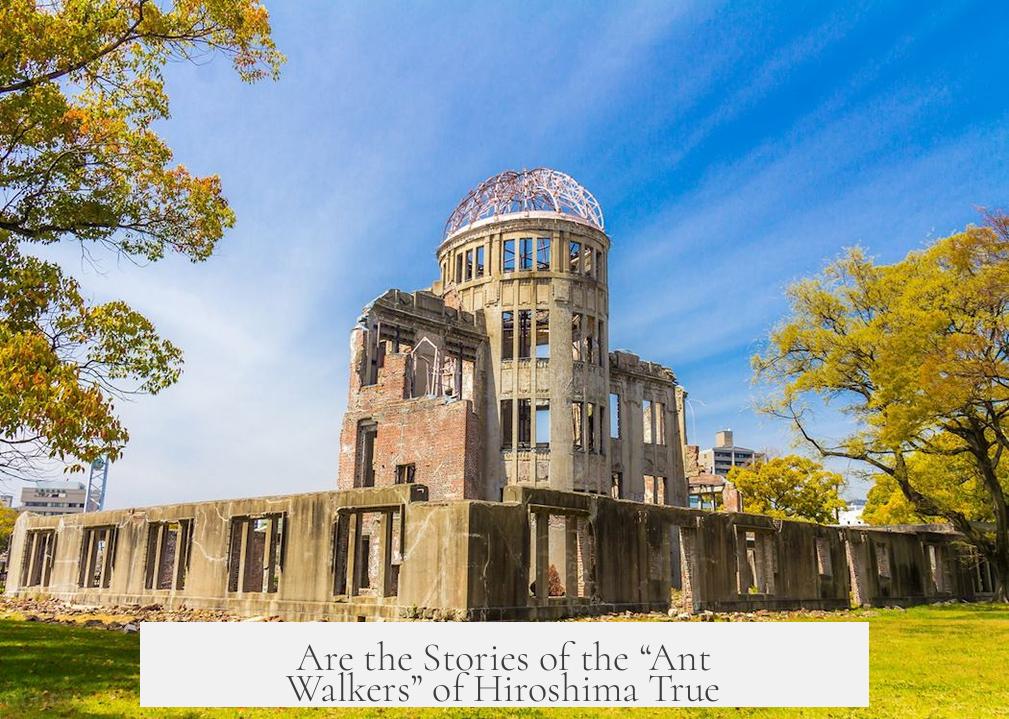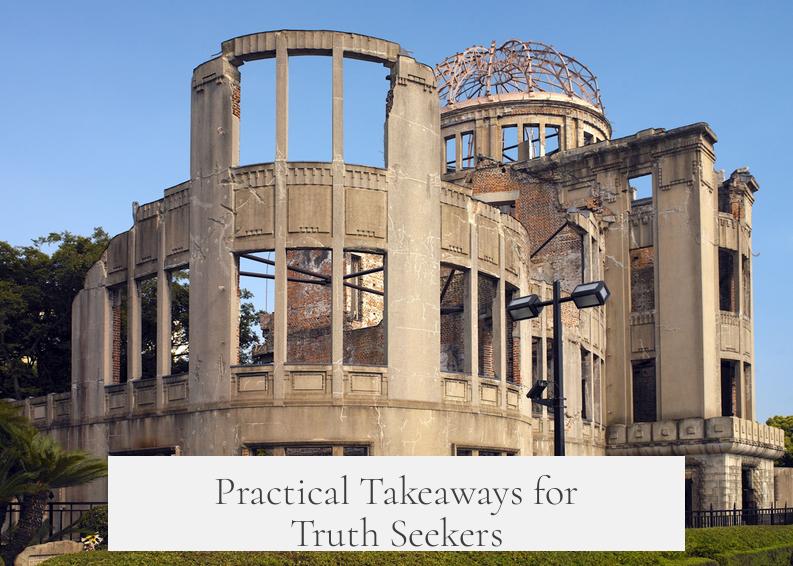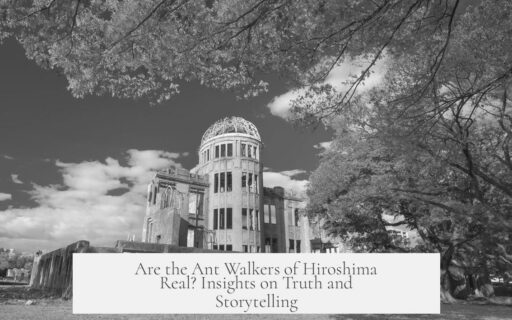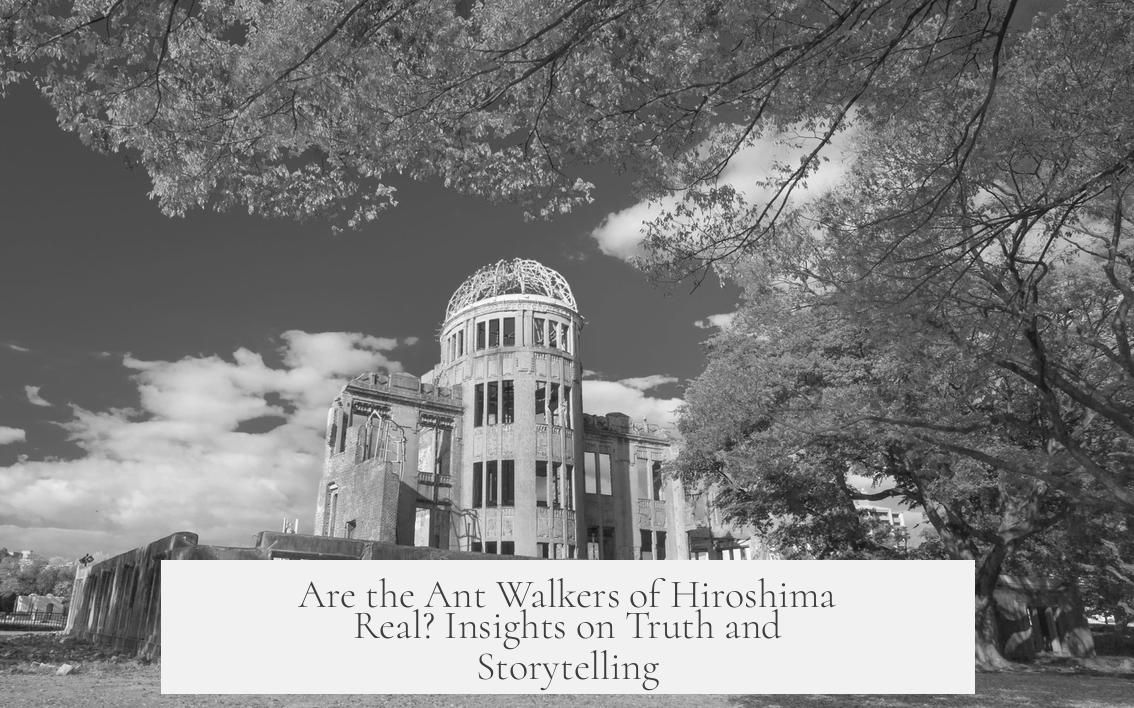The stories of the “ant walkers” of Hiroshima lack credible evidence and are widely regarded as unsubstantiated. These accounts do not have any corroboration from documented sources or reliable eyewitness testimonies.
The term “ant walkers” refers to peculiar, anecdotal narratives describing people or creatures observed shortly after the Hiroshima bombing. However, thorough historical research and available records show no verification for such reports.
A primary source promoting these stories is a book by Pellegrino, which faces strong criticism for its lack of rigorous historical methodology. The book contains several assertions that rely on hearsay and unverified testimonies. Most notably, it heavily depends on a supposed bombing crew member whose identity was never confirmed. This individual was later exposed as a fabricator who had no association with the Hiroshima mission.
Scholars and historians emphasize that credible history requires skepticism and careful source verification. Pellegrino’s failure to validate key witnesses weakens his work’s credibility. As Hiroshima’s bombing event is one of the most extensively documented moments of modern history, it is unlikely that such major detours or strange phenomena would remain unrecorded by legitimate observers.
- There is no independent confirmation of the “ant walker” sightings in Hiroshima.
- Pellegrino’s book was at times withdrawn because of these significant reliability problems.
- The reliance on a falsified bombing crew member’s account erodes the foundation of these stories.
- Historians caution against accepting sensational claims without strong evidence.
In conclusion, the “ant walkers” appear to be part of legend rather than verified historical fact. Without corroboration or credible documentation, these stories remain anecdotal. The scholarly consensus treats them with skepticism given their origin in questionable and sloppy source material.
- No verified eyewitness or documentary support exists for “ant walkers.”
- Pellegrino’s book lacks crucial citations and critical skepticism.
- The main eyewitness account was fabricated and not a bombing crew member.
- Extensive historical records of Hiroshima do not mention such phenomena.
Are the Stories of the “Ant Walkers” of Hiroshima True?

Imagine someone claiming that, after the atomic bomb hit Hiroshima, bizarre creatures called “ant walkers” roamed the ruins. Sounds like the plot of a sci-fi flick, right? The stories of the “ant walkers” are indeed circulating, but how trustworthy are they? The answer: these tales are wildly unsubstantiated and lean heavily on questionable sources, making their truthfulness highly doubtful. Let’s break down why these mysterious “ant walkers” belong more to fantasy than fact.
First things first: **where’s the evidence?** Despite the vividness of these accounts, there is no credible corroboration. No independent witnesses or documents back them up. The phrase “I’ve never seen them corroborated in the slightest” sums up the situation. When extraordinary claims lack supporting evidence, skepticism isn’t just healthy—it’s necessary. If these ant walkers had been real, would they not have appeared in multiple survivor testimonies, official reports, or historical archives? Yet they remain shadows in the historical record, whispering from the fringes.
Most of these tales trace back to a controversial book by Pellegrino, which attempts to describe unusual phenomena related to the Hiroshima bombing. Here, things get murky fast.
The Problem with Pellegrino’s Book
Pellegrino’s work might sound intriguing, but what lies beneath is a tangled mess of unverified assertions and sloppy research. Critics hammer the book for its “unfounded, un-cited assertions” peppered throughout the text, undermining any serious credibility it might have had.
Picture this: an author leans heavily on the witness account of a supposed bombing crew member. Problem? That person wasn’t part of the crew at all but a story-spinner, or “fabulist.” Imagine building a house on sand—that’s what Pellegrino did with his sources. The book was even pulled from shelves for a time because of this glaring error alone.
Moreover, Pellegrino’s failure to employ basic historical skepticism is glaring. Good history demands critical evaluation of every claim. Yet Pellegrino apparently skipped this crucial step, accepting stories at face value without proper scrutiny. The result? A narrative riddled with holes and dubious interpretations.
The absolute clincher lies in Pellegrino’s inability to verify the identity of his key informant. Hiroshima’s bombing is one of the most documented events of modern history. The crew members are well-known, and records are meticulous. So, how could Pellegrino not discover such a fundamental mistake? It’s a classic case of profound sloppiness—relying on faulty testimony to craft groundbreaking conclusions.
Does this mean all unusual stories about Hiroshima should be dismissed outright? Not necessarily. History sometimes reveals unexpected truths. But in this case, the lack of credible evidence and the questionable methodology behind the primary source demand skepticism.
Why Do Such Stories Persist?
In times of tragedy, human imagination races to explain the inexplicable. Could the “ant walkers” be a metaphor misunderstood? Or a novelty tale spun by survivors or authors seeking to shock? Perhaps they are a product of the eerie landscape post-bombing—a ghost story born from trauma.
Whatever their origin, these stories persist because they capture imaginations. Yet, as readers and researchers, distinguishing between captivating myth and verified fact is critical. The “ant walkers” remain in the realm of mythology, not history.
Practical Takeaways for Truth Seekers

- Always Demand Sources: When you encounter unusual historical claims, check if they’re backed by reliable evidence. If not, treat them cautiously.
- Skepticism Is Your Friend: Healthy doubt doesn’t mean cynicism; it means asking, “How do we know this is true?” This balances curiosity with rigor.
- Check Author Credentials and Methods: Is the author transparent about sources? Do peers critique or support their work? Pellegrino’s case shows why these factors matter.
In the vast archives about Hiroshima, no credible account mentions “ant walkers.” This absence speaks volumes. If they existed, someone—historian, scientist, or survivor—would have documented them by now.
So, next time you hear about the “ant walkers,” ask yourself: Is this a compelling mystery or a cautionary tale about poor research? History deserves respect—and so do those who lived it.
Final Thoughts
The stories of the “ant walkers” of Hiroshima are more folklore than fact. The lack of any solid evidence, combined with Pellegrino’s unreliable and insubstantial work, leaves these tales hovering in the realm of fantasy. While history sometimes surprises us, these particular accounts fail the test of credibility. For anyone seeking truth, it’s clear that the “ant walkers” remain a myth—an interesting story, but not one to be taken as truth.
Seeking historical truths requires digging deep and questioning boldly. Be careful not to let captivating stories bend facts. After all, the real history of Hiroshima is already profound enough without adding imaginary creatures to the mix.




